It’s an experiential and beginner-friendly crash course exploring Shamatha (calm abiding), Vipassana (insight meditation and mindfulness), Tantra, and Non-dual (direct path) meditation.
The world of meditation and spirituality is rich, vast, and often confusing.
I’ve spent over two decades exploring and making sense of it all, and would love to share some pointers.
Traditionally, if you wanted to learn meditation you’d find an experienced teacher and follow whatever path they lay out for you. Like, for example, when I was 21 I found a traditional teacher of Tibetan Buddhism and studied with him, doing the practices he laid out for me.
The problem here is, how do we know what teacher or path best suits us?
There are so many factors, from tradition to methodology to personality to integrity to experience. And just as importantly, does their approach align with your values, goals, and unique personality?

In my Comparative Meditation Course, my goal is to give you a solid overview of the major meditative traditions, how they differ, what’s similar, and set you up fully to start practicing.
You can take an integrative approach like me, mixing and matching techniques to best suit your needs and interests at the moment, or find a teacher or tradition you really like and commit to that.
I’m excited for the community component; practicing together in sessions and having a platform to chat on between sessions. Aside from providing meditation instructions and guided practices, I’ll also be recommending great teachers and resources so you can go deeper in whatever direction you’d like.
Understanding Meditation
Here I draw on the work of my main teacher Shinzen Young. Shinzen studied in various traditions and created a comprehensive framework to account for the changes that happen in all forms of meditative practice.
Shinzen made the bold claim that all progress in meditation and any spiritual practice comes from the development of three attentional skills. These are:
- Concentration - paying attention to what one deems relevant
- Clarity - bringing sensory experience into higher resolution and opening to more sensation
- Equanimity - Allowing everything to be just as it is, attitude of “this is OK” (I made a whole Equanimity playlist on my YouTube channel)
Throughout the course (and this essay) we will come back to these principles, exploring how each practice uniquely cultivates these attentional skills to further deepen understanding and practice.
Quick Buddhism Primer
Although there are many meditative traditions, Buddhism is one of the richest in teachings and philosophy.
Buddhism was born from Hindu culture, where the popular spiritual path at the time was asceticism. Desire was seen as the cause of suffering, and people strived to transcend the material world by abstaining from sense pleasure entirely, often starving themselves to the brink of death.
The Buddha came along and really shook things up by claiming that desire is not the cause of suffering, but it was actually our attachment to desire that caused suffering.
So we don’t have to give up pleasures or starve ourselves, we just have to work on our attachments.
The path of Buddhism is often called The Middle Way, as it’s midway between indulging in sense desires and renouncing them. The Buddha essentially said you can eat and feel good, but if you want to be liberated from suffering you can’t be attached to eating and feeling good.
This is really what equanimity is all about. About being totally ok with this moment the way it is. Not needing anything to be different at all.
Equanimity is all about being totally ok with this moment the way it is. Not needing anything to be different at all.
So if you feel a desire, that’s OK, you can be equanimous with it. You don’t need to act on it, and you don’t need to reject it either. It’s perfectly fine to feel desire, we just practice being OK with each moment as it is, feeling the sensations of desire (bringing them into more clarity) without acting on them or trying to suppress them.
This principle similarly applies to avoidance. We can feel a pull to avoid pain and discomfort, but we don’t need to act on it. We can practice being OK with each moment, even if it’s painful or uncomfortable.
The more we can let go of attachment, of things needing to be any particular way at all, the more liberated we are.
“If you let go a little, you will find a little peace.
If you let go a lot, you will find a lot of peace.
If you let go absolutely, you will find absolute peace and tranquility.”
– Ajahn Chah
Shamatha Meditation
Shamatha is often translated as calm abiding or peaceful abiding. In many traditions it’s the foundation of the meditative path.
The idea is that you first find calm and rest in the mind, and from there you can better learn all the other practices.
Shamatha meditation is not seen as leading to awakening or liberation on its own. It’s often said that you need insight to liberate, which comes from investigating reality (more on that in the next section).
I’ll be honest here, for many years I could never get any good at Shamatha practice.
While there is a common misconception that meditation is about stopping your thoughts, Shamatha really is about becoming more concentrated and having fewer thoughts.
One of the basic goals of Shamatha is access concentration, which means finding some relative stability in resting your mind on an object of meditation (usually your breath).
Thoughts don’t disappear entirely — at least not at first — but they do cease to distract from your object. Thoughts just become little wispy things in the background. They arise and pass, without the mind getting caught up in them.
Well I sucked at this. I blame my ADHD.
The good news is that you don’t need this to progress in meditation. In fact many great Vipassana teachers don’t even bother teaching Shamatha much at all, and instead start you off with insight meditation and mindfulness practice.
Thank God, because while I could never focus long enough to get access concentration, I found my ADHD mind could actually get into Vipassana practices, and I went on to customize a practice for myself that really helped with my ADHD.
All that being said, I’ve now come around to really loving Shamatha practice. This is partly because I’ve largely untangled my inner turmoil via Vipassana practice and found a lot more inner peace, making concentration more accessible. And I also found some clever techniques that I was previously unaware of, helping me to tame my monkey mind.
Shamatha Tip 1: Positive Association with Mindful Moments
A lot of people think concentration is a result of effort. Yes there’s some efforting involved, but it’s much more about learning to let go of distracting thoughts and rest than it is about trying hard to focus.
When we are trying to meditate and catch ourselves caught up in a thought, this is not a failure, but actually a win. Catching ourselves caught up in thought is one of the most important skills to develop. We can’t let thoughts go if we don’t first catch ourselves in them.
When we are trying to meditate and catch ourselves caught up in a thought, this is not a failure, but actually a win.
Catching ourselves caught up in thought is one of the most important skills to develop. We can’t let thoughts go if we don’t first catch ourselves in them.
So we want to create a positive association with catching ourselves in thought. Whenever you catch yourself thinking, this is a mindful moment. Give yourself a little pat on the back.
If you get frustrated every time you catch yourself in thought, then you are developing a negative association with mindful moments, and you will therefore have fewer of them.
Positive association with mindful moments = more mindful moments
Negative association with mindful moments = fewer mindful moments
Then it’s just learning to recognize thoughts as not being as important as they feel, and therefore being able to let them go and come back to your object of meditation.
Shamatha Tip 2: Creating a Positive Feedback Loop
Another little Shamatha hack is using good feelings to create a positive feedback loop while meditating.
You see distractions during meditation are usually correlated to your level of discomfort. When you feel good, it’s far easier to be focused.
We can cultivate good feelings, like compassion and good will, and use these as the object of meditation. The more we feel the good feelings here, the easier it is to rest our mind.
You can think of something that evokes wholesome feelings, like holding a newborn baby and looking into its eyes and it smiling at you, and then focus on the feeling that evokes. And then use that feeling as your object of meditation, bringing the thought back to mind to rekindle the feeling anytime it fades, but focusing more on the feeling than the thought.
It’s best to do this practice while smiling, really leaning into the feeling of the smile, not just on your face but imagining the feeling of smiling with your whole body. This is called an inner smile meditation.
Jhanas
This type of positive feedback loop in meditating can lead to blissful states of absorption, traditionally called Jhanas. These are increasingly refined states of absorbed or focused attention.
There are 8 Jhanas, the first 4 having “form”, and the next 4 being formless.
Again, I’m not a big Jhana guy but it’s absolutely interesting. Leigh Brasington is one of the best resources on this topic should you want to learn more.
The Jhanas are really cool and have a lot of value, but they are very much altered states of consciousness that typically don’t lead to insight and liberation. They are used, however, as preparatory practice to insight meditation or Vipassana, honing the concentrative power of mind later to be used to investigate sensory experience and the true nature of reality.
Vipassana
Vipassana roughly translates to “super seeing” and is also commonly called Insight Meditation or Mindfulness Meditation. It’s focused on investigating and deconstructing experience to reveal its true nature, the true nature of self and world (which are claimed to in fact be the same thing).
(Note that many people associate the term Vipassana with Goenka style Vipassana, known for their intensive 10 day silent retreats. This is just one of many styles of Vipassana practice, and here we are taking a much broader look at Vipassana in general.)
You see, our mind is actually constantly constructing reality. This conceptual construction of self and world keeps us from having a more complete and expansive perception.
Essentially we are trapped in a relatively small and limited experience of reality, and paying close attention to sensory experience helps deconstruct these limitations, opening us up to a liberating unconditioned perceptual awareness.
One of the strategies we employ here is investigating The Three Characteristics.
The Three Characteristics
The Buddha claimed that, for whatever reason, there are certain aspects of reality that we don’t perceive accurately. This misperception keeps us stuck in deluded suffering.
In Vipassana meditation, we observe our experience intently, and the true nature of reality reveals itself more and more.

The more we examine and watch reality, the more we see (and internalize) that things come and go (and nothing lasts), that fulfilling our desires is inherently unsatisfying (and resisting/avoiding pain and discomfort just make it harder), and that there isn’t a fixed, separate self to be found anywhere (the Self is a relational construct, and doesn’t exist an any independent way).
One of the most helpful and elegant frameworks I’ve found for understanding how Vipassana practice works comes from meditation teacher Michael Taft in his video Deconstructing Sensory Experience & Non-Dual Practice.
He posits that there are 4 stages of experience that we progressively deconstruct:
Conceptual - Projecting ideas, associations, and expectations onto our experience
Phenomenon - Seeing/feeling/hearing things for what they are (without conceptual projection or expectation)
Vibration - Sensory experience becomes less solid, more vibratory
Awareness - Everything is an expression of awareness itself
For example, we can explore this process in the visual field (Seeing).
You walk down the street and notice a tree. Are you really looking at that tree, really taking it in? Or are you just mentally labelling it a tree without further investigation?
What would it be like to completely forget the idea of a tree, and to look at it as if you were looking for the first time?
Getting out of the conceptual mind and into the senses, or the phenomenal world, is the first step to deconstructing your experience via Vipassana practice.
Getting out of the conceptual mind and into the senses, or the phenomenal world, is the first step to deconstructing your experience via Vipassana practice.
It’s important to note here that we don’t try to reject the conceptual world, instead we simply investigate it, noticing how much we are projecting concepts, and that careful attention to projection naturally deconstructs it, revealing a rich world of sensory experience.
But if we really look at the tree, and I mean really look, we may start to notice that it’s not quite as solid as we once thought.
The more we pay attention to sensory experience — any sensory experience at all — the more we start to see the vibratory nature of sensations.
The tree looks solid and fixed, but when we really look, we notice a subtle vibratory quality to everything.
This is even more apparent when it comes to feelings.
Feelings follow this same course. At first we have conceptual experiences of feelings (example: I feel sad, or I feel anxiety). But when we start to really pay attention, we realize the actual sensations of sadness or anxiety are different from our ideas of what they are.
Can you pay attention to your feelings without conceptualizing them?
Can you pay attention to your feelings without conceptualizing them?
Like just notice what the actual sensations are?
When we do this, feelings become easier to be with. We find that our judgements on feelings (labelling them good or bad) just makes challenging feelings that much more difficult.
If we can get through the conceptual projection onto our feelings, let go of judgments and resistance and just experience the sensations for what they are (equanimity), we will find that feelings are a lot more manageable.
And as you pay attention to the sensations, they will break up, becoming less and less solid, and more vibratory.
Finally we arrive at awareness, where we start to experience everything as awareness.
Normally we think of only living things being aware, and awareness existing somewhere behind the eyes, but Buddhism teaches that everything, without exception, is not separate from the awareness that perceives these things.
That the entirety of existence is made up of the same “stuff”, it’s one undivided field of awake awareness.
So Vipassana is paying careful attention to sensory experience in a manner that deconstructs our projections about ourselves and the world.
“Although it can be useful to think of mindfulness as ‘being with things as they really are’, it is in fact more accurate, and more helpful for our purposes, to understand basic mindfulness practice as a way of looking that merely fabricates a little less than our habitual ways of looking.”
– Rob Burbea, Seeing That Frees
The key to this whole process is to embrace the stage you’re at. If you’re mostly seeing the world conceptually, really notice what that’s like. As you pay attention to the conceptual projection onto people and objects, you’ll naturally start to see things more apart from the projection, or with a little less fabrication.
Vipassana Level 1: Mind and Body
When I first introduce Vipassana, I try to make it as simple as possible. Just start to pay attention to what’s happening in your mind and body.
It’s easy to get lost in the mind, so I like to use my body awareness as a baseline.
I just notice what’s happening in my body, what feelings or sensations are present, and stay with this until a thought arises. When I notice a thought, I just look at it, examine it (notice its form, how it appears, where it appears), and then return to the sensations in my body.
It can also be helpful to notice the connection between mind and body, how certain thoughts trigger certain feelings, and how certain feelings trigger certain thoughts.
Vipassana Level 2: See, Hear, Feel
While there are several dimensions of experience we can examine, Shinzen Young proposes that we focus on just three: seeing, hearing, and feeling.
Each of these sensory channels has an inner and outer dimension.
For example, you can see things in the environment around you, or also see things in your mind’s eye (imagination or visualization). Similar to how we can hear things in our environment, we can also hear our inner dialogue.
You may notice that thoughts consist of seeing images and hearing inner dialogue (or sometimes imagining sounds).
So we can pay attention to both our inner world as well as our outer world, tracking what we see, hear, and feel. This sensation tracking naturally starts to deconstruct your world, allowing for a greater sense of awareness, spaciousness, and ease.
The great thing about See-Hear-Feel noting or labelling practice is that you can do it in formal meditation, or use it as a mindfulness practice throughout the day (I do both).
Conclusion
There are many ways to practice Shamatha and Vipassana, and even mix them. I barely scratched the surface here when it comes to ways to practice Vipassana, and excited to explore more during the course.
If you’ve made it this far, you’ll probably really enjoy my course. It’s structured for easy learning through a mix of theory, practice, and discussion. Check it out!
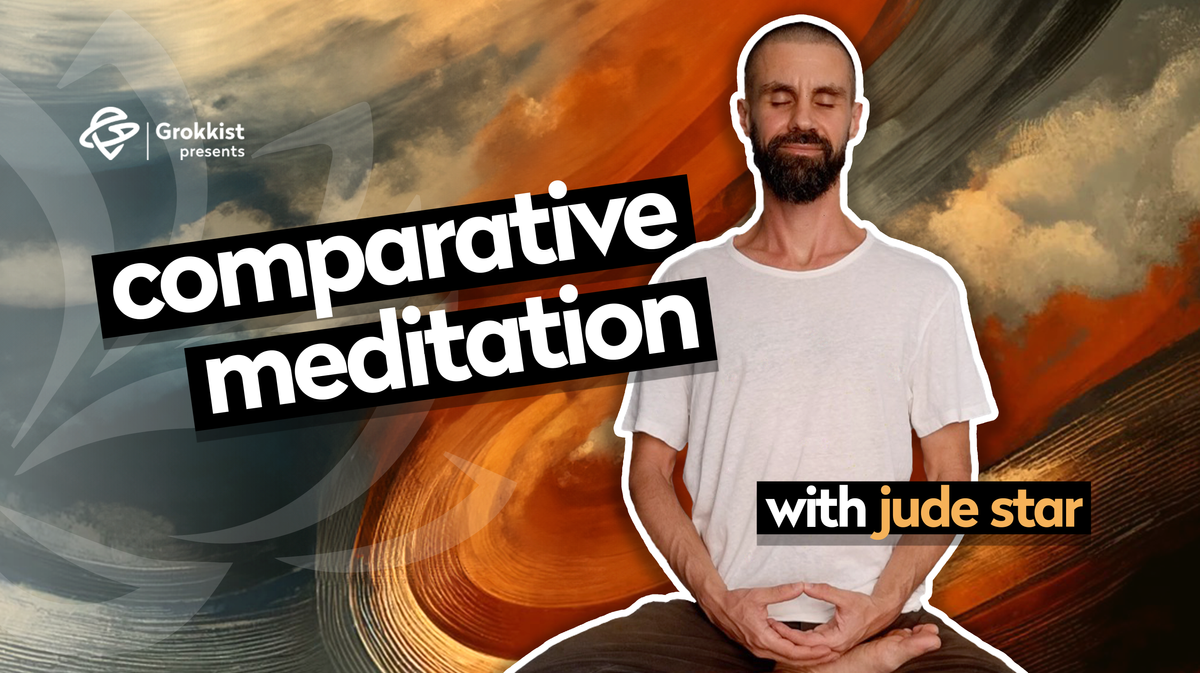
Part 2 – Is Tantra the most misunderstood tradition?
Part 3 – Non-Duality and Direct Path: starting at the end.


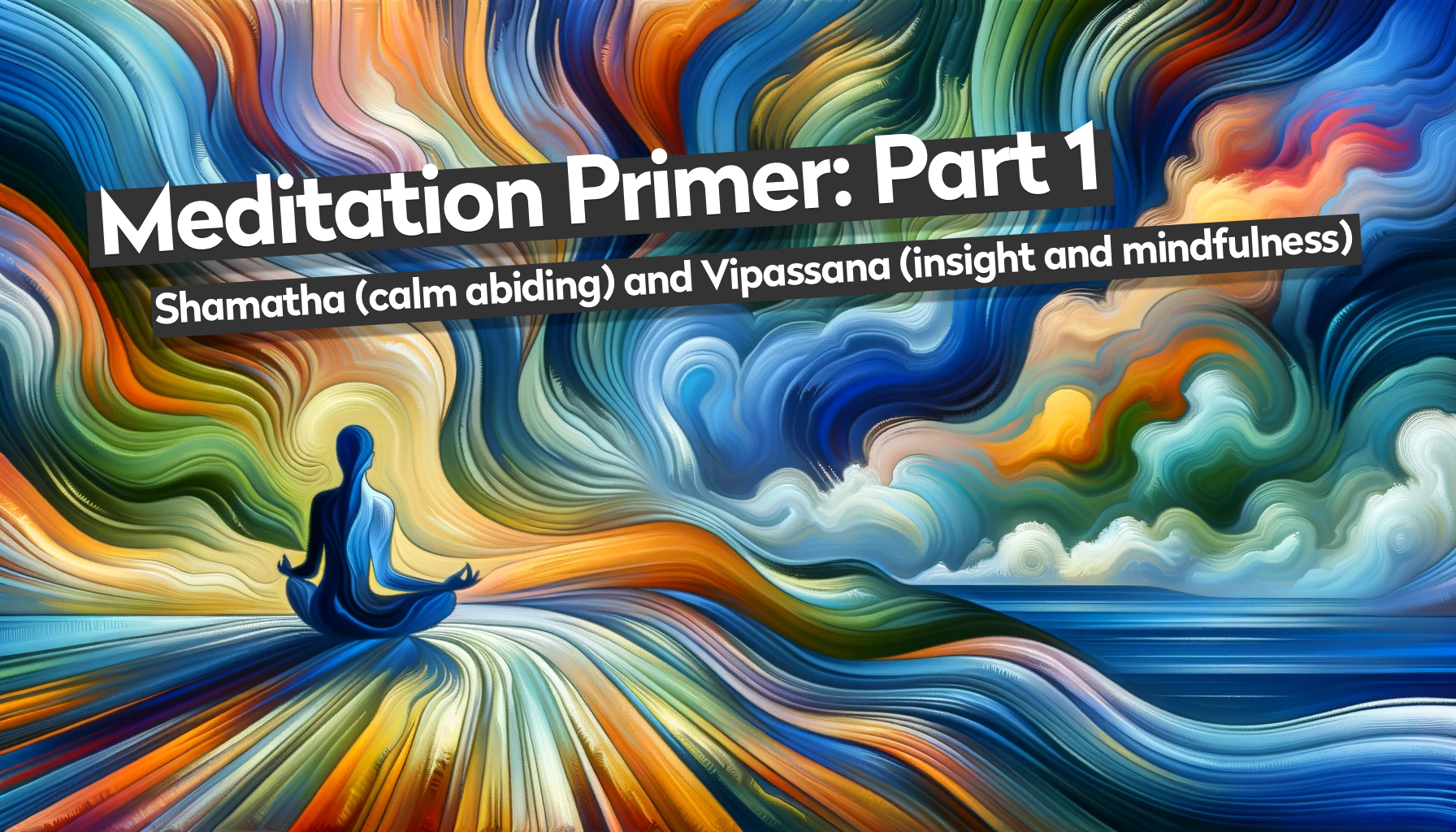
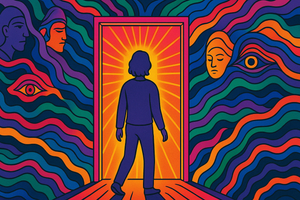




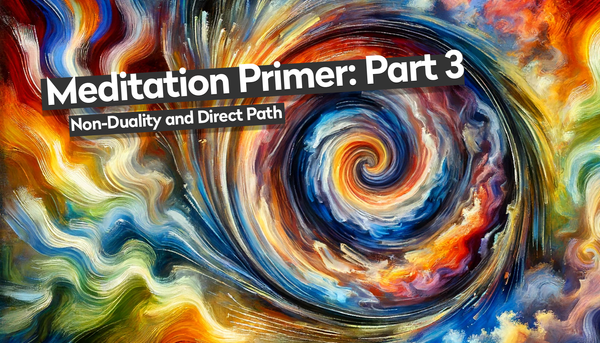
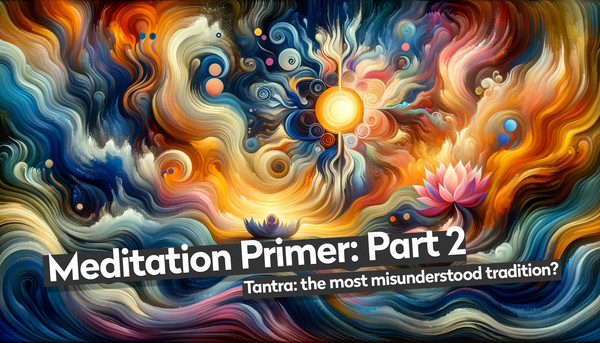
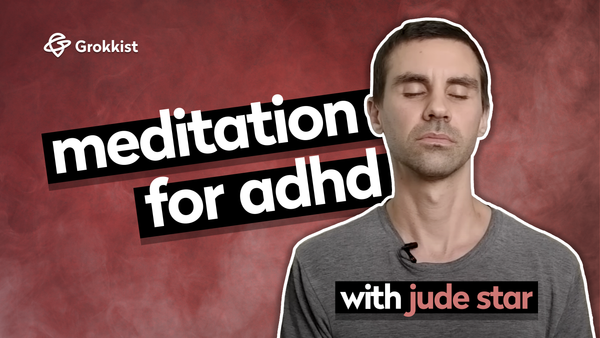
Member discussion